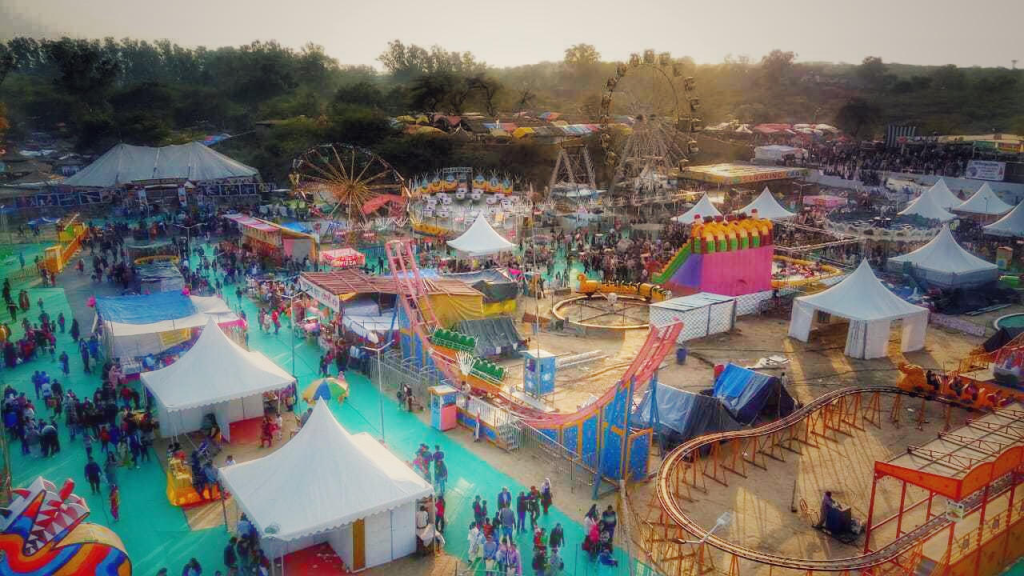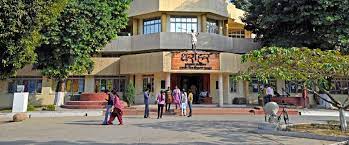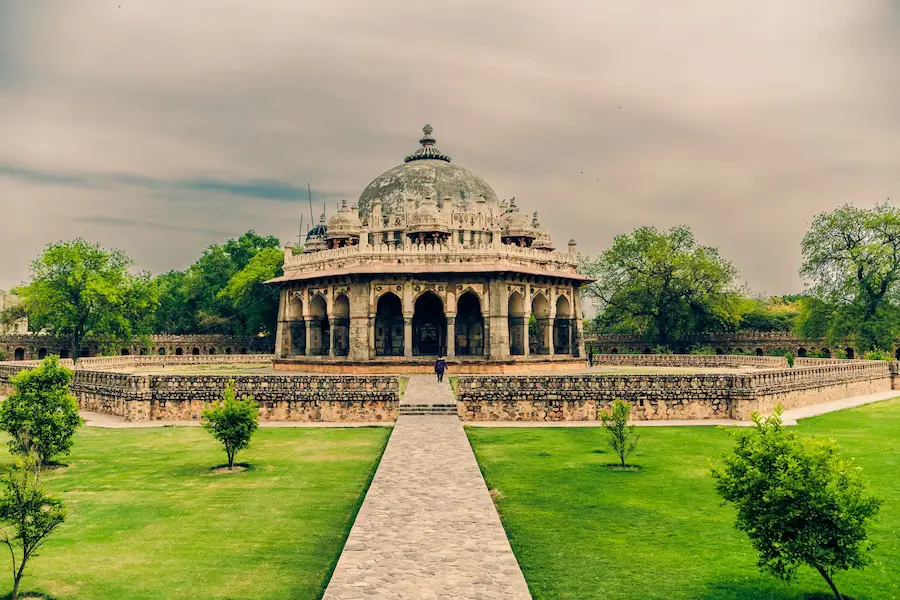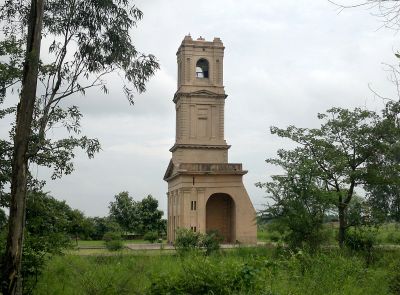Browse Items (153 total)
Sort by:
-
Gurudawara Mastgarh
The principal mosque of the city was said to have been built by the Mughal emperor Shah Jahan in 1630. It was converted into a Gurudwara by demolishing its minarets, hoisting the Nishan Sahib (Sikh flag) over it and installing Guru Granth Sahib inside it. The domes and mehrab remained intact. It was given the name Gurdwara Mastgarh. -
Jyotisar
It is believed that Mahabharata battle started from Jyotisar, where on the eve of the battle deluded Arjuna received the eternal message of Gita from its propounder Lord Krishna. It is said that Adi Sankaracharya has identified the place during his sojourn to Himalaya in the 9th centenary of Christian era. In 1850 A.D. King of Kashmir constructed one Shiva temple at the tirtha. Again in 1924, King of Darbhanga raised a stone platform around the holy banyan tree, which according to devouts is the evidence of the song celestial i.e Gita. In 1967 Sankaracharya of Kanchi Kama Koti Peetha. Installed the Chariot showing Gita Updesha on the platform facing east. The tirtha in the past might be comprising the ancient temple, but they could not sustain because of the fury of the invaders in medieval times. Architectural member of one such temple of 9th-10th century is placed on the main platform of the temple. The Haryana, Tourism is running a light and sound show daily here in Hindi and English in the evening. -
Light and Sound Show at Jyotisar
Episodes from the epic Mahabharata come alive in the engaging Light and Sound Show at Jyotisar, where tourists and locals gather alike to witness a period in history and mythology through a vibrant medium of colours and lights. This multi-sensory show uses a combination of film, light, sound and water to bring the spirit of the divine tales to life. Every evening, as the sun sets, visitors and local alike queue up to be audience to this innovative story telling. The well researched, visually alluring and eloquently narrated mythological tales are a work of art, worth admiring. -
Nabha House
This monument was used by the royal family members for stay during the days of religious performances at Kurukshetra. The building stands on a raised platform. The entrance gate is on the eastern side and its either sides are decorated with four arched niches (Miharab). There are two beautiful pillared windows (Jharokha) on the second floor of the building. The base and the top of these pillars have been decorated with lotus design. A temple dedicated to God Brahma is constructed on the top of the monument. It is fifteen-feet tall and built on Navaratha (nine corners) plan. The wooden door on entrance is studded with decorative iron nails, which represent the Hindu style of architecture in early British era. The main entrance through another gate leads to a rectangular courtyard. The stairs on the southern side of the courtyard lead to the temple on the second storey. -
Pathar Masjid
The ceiling of the mosque rests on pillars that are decorated with floral designs carved in low relief. The ‘qibla’ in the centre of the western wall is flanked on either side by two arched niches inscribed with verses from the Quran. The masonry terrace forming the front court was certainly added at a later stage. On the basis of the style of architecture, the Masjid appears to have been built in the 17th century AD. -
Raja Harsha ka Tila
The site spread over an area of 1kmx750 m. This site was excavated by Shri B.M.Pandey of Archaeological Survey of India. A few potsherds of Painted Grey Ware found from the lowest level of the site indicate the existence of a settlement before starting a continuous habitation at the site since Christian era. The excavated material ranging from Circa 1st century AD to 19th century was divided in six cultural periods. -
Raja Karna ka Qila
The mound, first surveyed by Alexander Cunningham, was excavated by D.B. Spooner of Archeological Survey of India in 1921-23. Later, the archeological excavations by Prof U.V.Singh of Department of Ancient Indian History, Culture and Archaeology, Kurukshetra University, Kurukshetra have yielded the remains of three cultural periods ranging from Circa 4th century BC to 3rd century AD.
Period-I (Circa 4th century BC to 1st Century BC) is represented by the Painted Grey ware of coarse fabric with beads of terracotta and semi-precious stones and other small antiquities of terracotta, bone etc. The two terracotta seals containing auspicious symbols (swastika, snake, nandipad and crescent) are the important antiquities of this period.
Period-II (Circa 1st century BC to 3rd Century AD) This cultural period is represented by houses of mud and baked bricks, red polished ware, stamped pottery, terracotta objects and a few clay sealings with Brahmi legends.
Period-III After a long gap, the site was rehabitated during the late medieval times in about 15th century AD. The remains of this period were identified on the northern fringe of the mound. It included houses, fortifications and a small house made of Lakhauri bricks with lime plaster. -
Sannihit Sarovar
It is supposed that entire range of Tirthas assembles here on the day of Amavasya and as per the legends, if a man performs Shradhs at the time of solar eclipse and takes bath in this tank, he acquires the fruit of 1000 Ashwamedh sacrifices.
At the time of solar eclipse, pilgrims gather at this holy spot. Interestingly visitors to this place can know about their ancestors from the Purohits or locally known as Pandas, who for ages have been the record keepers of the pilgrims coming from various parts of the country.
Sikh Gurus too have visited this holy place from time to time. -
Sheikh Chaheli’s Tomb
The tomb, overlooking the madarasa and standing on an artificial terrace, is octagonal in shape with the entrance in the south. It is built of buff sandstone and is crowned with a pear-shaped dome of white marble standing on a high circular drum. The cenotaph of saint occupies the centre of the chamber, while his grave is located in the lower chamber, which conjoins the madarasa through a narrow gallery. The madrassa has nine-arched openings on each side of a central courtyard that has in the centre a stone masonty tank. John Dawkins, the then collector of Thaneshar, was instrumental in getting the tomb repaired in 1854 AD. The antiquities recovered from the excavations at Harsh ka Tilla and Bhagwanpura (both failing in the district of Kurukshetra) are displayed in two small museums of the madarasa building -
Vishvamitra Ka Tila
Two inscriptions of Gurjar-Pratihara period have been found at Pehowa. One inscription from this place records the creation of three Vishnu temples in this town. Another inscription, still in the Garibnath Mutth at Pehowa, of Raja Bhojdeva of 882 AD, records collection of voluntary tax from each trader for the purpose of maintenance of these Vishnu temples existing there and elsewhere. This site of Vishvamitra ka Tila too contained the remains of one of the Vishnu temples at this place.
This temple site was scientifically cleared under the direction of Shri D.S.Malik of the Department of Archaeology & Museum, Government of Haryana. Scientific clearance of this site yielded beautiful stone sculptures depicting Ramayana and Mahabharata scenes. The remains of an ancient temple plinth made of baked bricks were also found during clearance operation. These are the only known brick temple remains of this kind in this region.

















